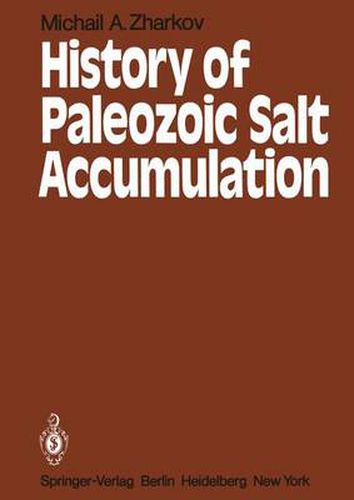Readings Newsletter
Become a Readings Member to make your shopping experience even easier.
Sign in or sign up for free!
You’re not far away from qualifying for FREE standard shipping within Australia
You’ve qualified for FREE standard shipping within Australia
The cart is loading…






This title is printed to order. This book may have been self-published. If so, we cannot guarantee the quality of the content. In the main most books will have gone through the editing process however some may not. We therefore suggest that you be aware of this before ordering this book. If in doubt check either the author or publisher’s details as we are unable to accept any returns unless they are faulty. Please contact us if you have any questions.
The principal aim of the present work is to understand the evolution of halogenesis in the Paleozoic. To succeed in the study it was neces- sary to make a general and systematic synthesis of data available on world-wide Paleozoic halogenic deposits and describe all known eva- porite basins. This study succeeds the monograph Paleozoic Salt For- mations of the World (Zharkov 1974a). The history of Paleozoic salt accumulation is based chiefly on evidence presented in the above monograph; this work should be considered as its direct continutation. The present work mainly aims at: (1) establishment of the num- ber of both salt and sulfate basins and salt and sulfate sequences formed therein in the Paleozoic; (2) determination of the stratigraphic position of salt and sulfate sequences in separate regions, their distant correlation and recognition of stages of evaporite sedimentation during the Paleozoic; (3) determination of the volume and areas of distribution of halite, potash, and sulfate sedimentation within basins and on continents through periods, epochs, and ages of the Paleozoic to single out epochs of the most intense evaporite sedimentation; (4) reconstruction of paleogeography of continents to recognize stages of evaporite accumulation and paleoclimatic zones of halogenic sedi- mentation in the Paleozoic; (5) understanding the evolution of eva- porite sedimentation in the Paleozoic. The nomenclature used in the book should be explained.
$9.00 standard shipping within Australia
FREE standard shipping within Australia for orders over $100.00
Express & International shipping calculated at checkout
Stock availability can be subject to change without notice. We recommend calling the shop or contacting our online team to check availability of low stock items. Please see our Shopping Online page for more details.
This title is printed to order. This book may have been self-published. If so, we cannot guarantee the quality of the content. In the main most books will have gone through the editing process however some may not. We therefore suggest that you be aware of this before ordering this book. If in doubt check either the author or publisher’s details as we are unable to accept any returns unless they are faulty. Please contact us if you have any questions.
The principal aim of the present work is to understand the evolution of halogenesis in the Paleozoic. To succeed in the study it was neces- sary to make a general and systematic synthesis of data available on world-wide Paleozoic halogenic deposits and describe all known eva- porite basins. This study succeeds the monograph Paleozoic Salt For- mations of the World (Zharkov 1974a). The history of Paleozoic salt accumulation is based chiefly on evidence presented in the above monograph; this work should be considered as its direct continutation. The present work mainly aims at: (1) establishment of the num- ber of both salt and sulfate basins and salt and sulfate sequences formed therein in the Paleozoic; (2) determination of the stratigraphic position of salt and sulfate sequences in separate regions, their distant correlation and recognition of stages of evaporite sedimentation during the Paleozoic; (3) determination of the volume and areas of distribution of halite, potash, and sulfate sedimentation within basins and on continents through periods, epochs, and ages of the Paleozoic to single out epochs of the most intense evaporite sedimentation; (4) reconstruction of paleogeography of continents to recognize stages of evaporite accumulation and paleoclimatic zones of halogenic sedi- mentation in the Paleozoic; (5) understanding the evolution of eva- porite sedimentation in the Paleozoic. The nomenclature used in the book should be explained.